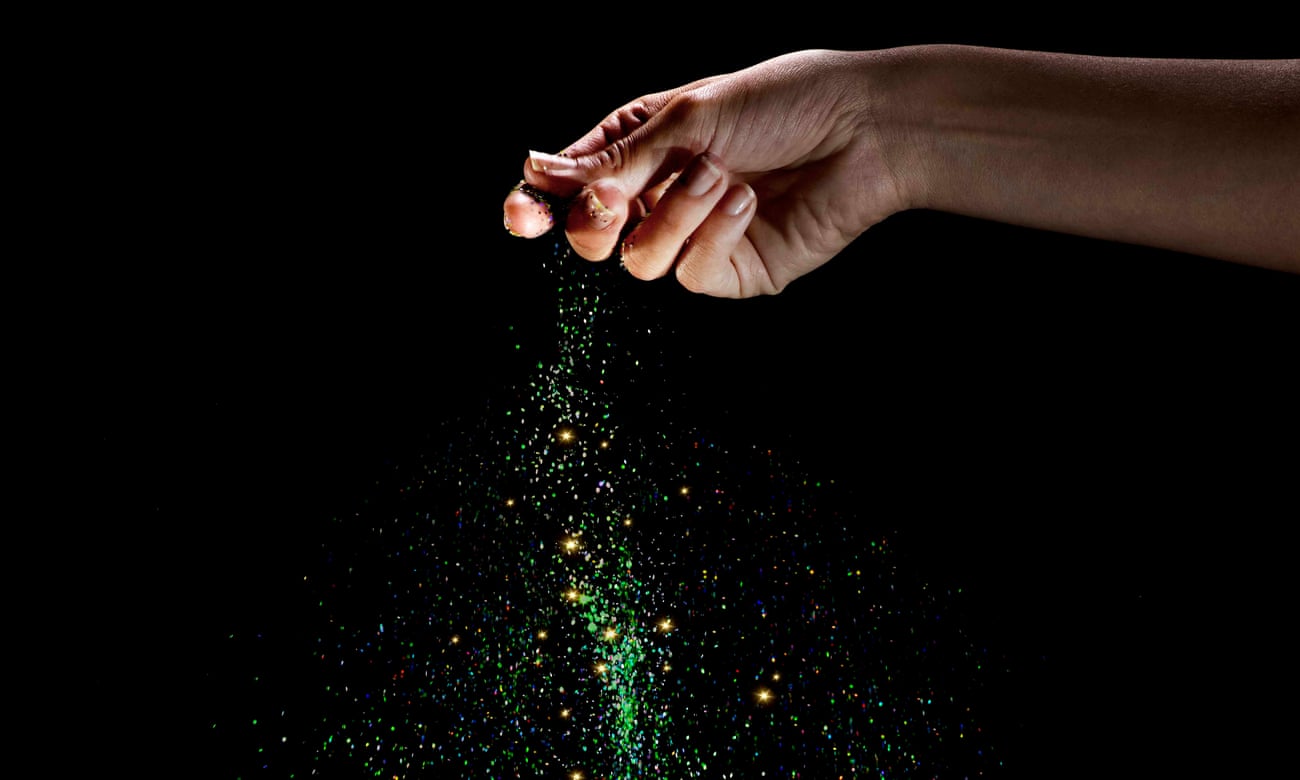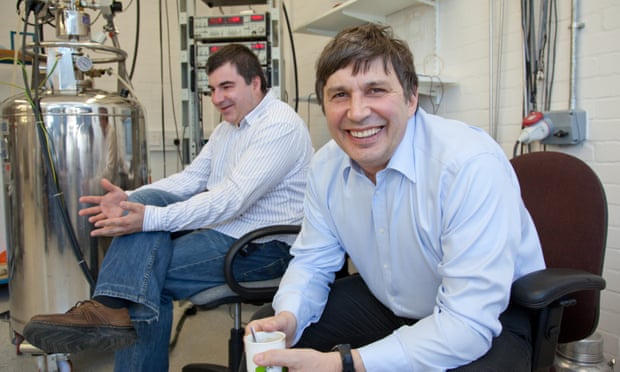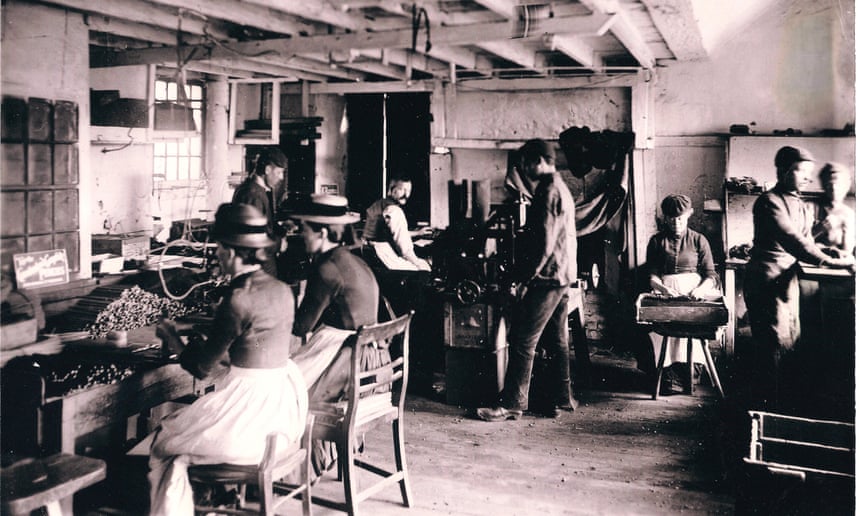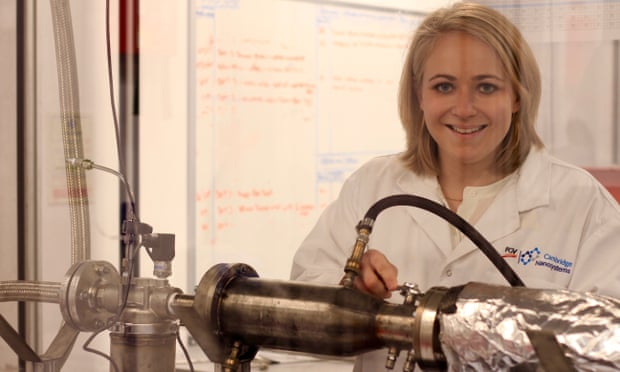
It’s been hailed as the wonder material that will revolutionise everything from smartphones and car tyres to aeroplanes and condoms. But the problem with graphene, for the curators of a new exhibition at the Museum of Science and Industry, is that you can’t actually see it. And none of these potentially miraculous applications for the atom-thick material have actually been invented yet.
“There’s never been so much expectation invested in a new material,” says Danielle Olsen, co-curator of Wonder Materials: Graphene and Beyond, which opened this week in the city where this mercurial form of super-thin carbon was first isolated in 2004. “It’s under a lot of pressure to perform.”
It’s 12 years since Russian-born scientists Andre Geim and Kostya Novoselovhappened upon graphene in one of their “Friday night experiments”, using sticky tape to peel off thin flakes from a big block of graphite, but there’s still little understanding of what this Nobel prize-winning discovery actually means. It is the strongest, lightest, most conductive material in the world, 200 times tougher than steel, more flexible than rubber, and almost totally transparent. It could see bendy touch screens, artificial retinas and ever-lasting batteries; but all of these things, according to Geim, are still a long way off.

“Journalists and the general public always want to see an immediate revolution,” he says, with a world-weary air that comes from a decade telling people that, no,Harry Potter-style digital newspapers are not quite around the corner. “The first applications of graphene are not science fiction. We’re seeing tiny improvements, such as reducing overheating in electronic equipment, or increasing the performance of water batteries by 1%. This is not like the pace of software development. We are making normal human progress.”
Faced with the challenge of an invisible material and no whizzy inventions to show, the curators have devoted a good two-thirds of the exhibition to a history of graphite and the personal stories of the Russian duo, including replicas of their medals and some of their favourite books. The northern heritage of the black stuff looms large, with an 18th-century painting of a “black lead” mine in Cumberland, along with a display of Keswick pencils and cannonball moulds, in which Borrowdale graphite was used. There are atomic models aplenty, too, the link being that atomic theory was pioneered by another Manchester-based chemist, John Dalton. But a lot of this first section feels like filler – endless carbon foreplay that never quite reaches the hoped-for graphene climax.

At the end of the space, in a small white room designed to evoke a laboratory environment, finally comes a group of cabinets devoted to six scientists working with graphene. Each feels like potentially ground-breaking research, which makes you wonder why they weren’t given more than a locker-sized cabinet to tell their stories.
We meet Roman Gorbachev, based at the University of Manchester’s National Graphene Institute, who is developing “heterostructures” by layering graphene with other materials to make tiny nano-devices. Little containers display flakes of what look like gold leaf and tinfoil, which are in fact boron nitride and gallium selenide, produced for the first time as “2D” crystals. Once again, there is no explanation of what they might be used for.
Thankfully Gorbachev is on hand at the opening to explain he is prototyping tiny transistors, and that these new layered materials could see LEDs a micrometer square and five atomic layers thick. Like Geim, he makes it sound wonderfully simple, using “hi-tech sticky tapes with different properties” to peel off super-thin layers of each material. “You have evolutionists and creationists,” he says. “We are the exfoliationists.”
Korean scientist Sang-Hoon Park, meanwhile, has been busy “deep-frying” graphene to scrunch it up into little pompoms, increasing its surface area for potential energy storage applications. Catharina Paukner’s display is one of the most compelling, demonstrating how graphene can be made in a compact bioreactor), using microwaves to generate plasma from the natural gas produced by food waste, oil byproducts and even cows.

You might expect to see how graphene could be impregnated into clothing to monitor health, or be dazzled by the world’s first graphene-coated car, unveiled in Manchester last week, but the section on the future of the wonder material is perhaps the most disappointing. Some white panels illuminate when you touch them, next to blue-sky sentences like “imagine drinking seawater through a straw, or having a battery that lasts a lifetime”. We could imagine it – or the museum could explain how it might be possible.
Scared of bamboozling the public with science, the curators have commissioned the poet Lemn Sissay and artistsRandom International to interpret the theme instead. The much-vaunted “installation” by the group behind the Barbican’s wildly popular Rain Room turns out to be a film of a steamroller crushing some gravel.
This is the first touring exhibition to originate in theManchester museum since it joined the Science Museum group four years ago, representing a “step change” in the calibre of its shows, according to director Sally MacDonald. It is fitting that a graphene exhibition should originate in the city of its discovery, but it doesn’t nearly do justice to the game-changing power of its subject. It seems they’ve taken Geim’s declaration of the arrival of a new “two-dimensional era” a little too literally.
• Wonder Materials: Graphene and Beyond is at the Museum of Science and Industry, Manchester, until 25 June 2017.








